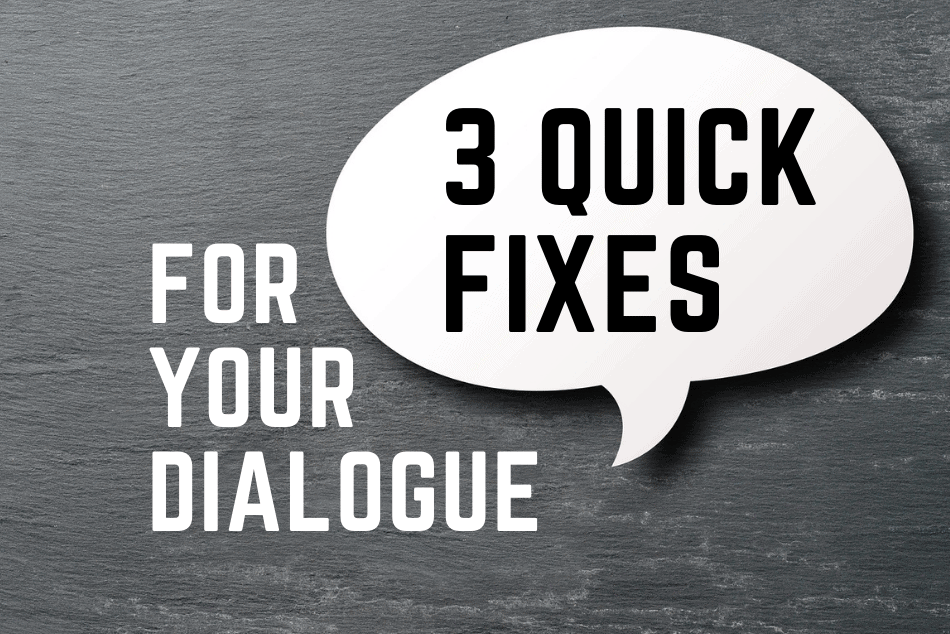Little can sink a first-pages critique faster than poorly written dialogue. Conversely, well-done character conversations can work overtime to elevate a novel: speeding the pace, advancing (or twisting) the plot, establishing (growing, challenging, damaging…) relationships, adding personality and interest, even changing the entire context or tone of a scene with as little as a one-word reply.
When it comes time to revise, I go over my dialogue passages again and again and again. With practice, most fiction writers develop little tricks for shining up their dialogue once it’s on the page. Here are a few of my own tried-and-trues.
-
See what’s better said nonverbally.
Often if a dialogue passage is getting too long or drawn out, this is the fix you need.
Instead of:
“Do you really want to do this?”
“I don’t know. I planned on it, but now that I’m here…”
“You’re having second thoughts.” He was trying to be patient, nice, but he couldn’t keep the disbelief from his tone.
“Maybe? I’m sorry. I don’t know what’s wrong with me.”
“Mary! You promised!”
Try:
“Do you really want to do this?”
He was asking only to be nice. There’d be no turning back from the plan now. But Mary’s eyes slid sideways, avoiding his for a beat too long.
“Mary! You promised!”
-
Take out every word you don’t need.
There’s a common misconception that to feel authentic, dialogue needs to read the way people talk in real life. As a feature writer who’s been transcribing recordings of my own interviews for decades, I’ve spent endless hours cataloguing how untrue this is. Even chats with the most articulate people on this planet are full of fillers and asides, stammers and tangents.
Your job is to sift through all of that and pull out the good stuff. Think of dialogue as the “greatest hits” of real conversation. Boil it down to its briefest, wittiest, smartest, most to the point. Read every dialogue passage aloud, and challenge yourself to take out every single word you don’t truly need. You may be surprised at how much stronger the end result reads.
-
Know when to lighten the mood.
Even in our most serious moments, we can be sarcastic or attempt jokes, misspeak or misunderstand each other in ways that are unintentionally funny. It’s human nature to keep from being too dire for too long. If you have a long, tension-fueled scene where you’re imparting a lot of key information to the reader, try adding a little humor to the exchange.
For instance, if two characters are having an argument, an inside joke can remind us how much history they have between them, and what they mean (or once meant) to each other—even if it doesn’t go over well in the moment.
If you think humor absolutely does not have any place in a scene, that may actually be where you need it most. Readers want to be entertained; hold their attention with the unexpected.
In a police interrogation scene from my domestic suspense novel Not That I Could Tell, our protagonist, Clara Tiffin, is being questioned about her missing neighbor, Kristin, by two detectives: a young man who is leading the questioning, and his colleague Detective Marks, who, like both the protagonist and the missing woman, is also a mother.
“Your kids went with Kristin’s to the Circle of Learning preschool. Was Kristin well liked among the moms?” …
“Very.”
“Do you ever read the school’s collaborative parent blog?”
“Occasionally.”
“She made some guest posts there, and I have to say, some of those comments threads devolved into flame wars over seemingly trivial things. On one, she was getting attacked just for admitting to serving her kids chicken nuggets.”
Clara shook her head. “That has nothing to do with Kristin. Every parenting blog is like that.”
Again he looked at Detective Marks, and again she shrugged with a small smile. “What happened to ‘it takes a village?’” he muttered.
“The village has gotten pretty judgmental,” Clara said. Detective Marks laughed out loud.
Pages upon pages of straight interrogation get tiresome, even if the stakes are high. Look for the right spots to give us glimpses into your characters’ lives and personalities, and to give them a chance to bond or relate over little human moments. Notice that the above scene clearly endears Clara to Detective Marks, even though the latter doesn’t say a word. It’s more than a deadpan remark: It’s a connection. And it will serve a purpose in the story later.
Your turn: What are some of your own favorite dialogue fixes? Visit Career Authors on Facebook to join the discussion.





